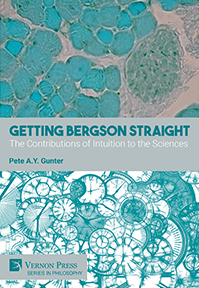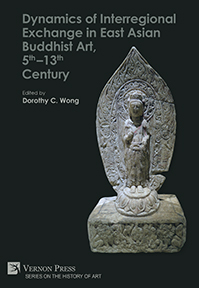Search
Browse
by Publication status
by Subject
Anthropology (26) Art (171) Business and Finance (38) Cognitive Science and Psychology (63) Communication and Journalism (51) Economics (116) Education (71) History (169) Human Geography (23) Interdisciplinary (43) Language and Linguistics (178) Law (16) Music Studies (18) Philosophy (222) Political Science and International Relations (127) Sociology (404) Statistics and Quantitative Methods (21)by Series
Series in Literary Studies (62) Series in Philosophy (57) Series in Education (49) Series in Sociology (42) Series in World History (31) Series in Politics (30) Bridging Languages and Scholarship (26) Series in Language and Linguistics (25) Cognitive Science and Psychology (20) Series in Philosophy of Religion (20) Series in American History (19) Series in Art (19) Critical Perspectives on Social Science (16) Series in Cinema and Culture (16) Curating and Interpreting Culture (15) Series on the History of Art (14) Series in Anthropology (13) Series in Critical Media Studies (13) Economics (13) Series in Business and Finance (12) Series in Music (12) Series in Performing Arts (9) Philosophy of Personalism (8) Series in Communication (8) Series in Law (8) Series in Economic Methodology (7) Series on Climate Change and Society (7) Classics in Economics (6) Series in Economic Development (6) Women's Studies (6) Philosophy of Forgiveness (5) Series in Built Environment (5) Series in Economic History (5) Series in Philosophy of Science (4) Series in Social Equality and Justice (4) Series on the History of Science (4) Serie en Sociología (3) Series in Contemporary History (3) Series in Creative Writing Studies (3) Series in Design (3) The Interdisciplinary Built Environment (3) Series in Heritage Studies (2) Series in Innovation Studies (2) Serie en Ciencias Políticas (1) Serie en Comunicación y Medios (1) Serie en Entorno Construido (1) Serie en Estudios Culturales (1) Serie En Estudios Literarios (1) Serie en Filosofía (1) Serie en Música (1) Series in Classical Studies (1) Series in Economics of Technological Change (1) Series in Philosophy of Race (1) Series in Urban Studies (1)by Language
English Spanishby Author
Browsing with filters

The end of the Western Civilization? The Intellectual Journey of Humanity to Adulthood
Hippokratis Kiaris, University of South Carolina
Availability: In stock
118pp. ¦ $50 £40 €47
Civilizations can be perceived as living human beings that are born, mature, age, and ultimately die and disappear, passing their legacy to the future generations. These transitions may be projected to the different stages of cognitive development of children. The Western Civilization, which embodies our current state of cultural advancement from the Classic Greek to the modern period, can be paralleled by the gradual transitions of human beings toward adulthood. From this perspective, the ancient Greek era resembles the toddler years of humanity at which the first “why”-type questions are being asked. The theocratic period that followed until the Renaissance can be seen as our childhood, when people lived their lives under the tight boundaries set by religious authorities. The period spanning from the Enlightenment until almost the end of the 20th century can be considered as our teenage years when people rediscover their past, are liberated from superstition, and set the path forward based on reason by a manner at which the distinction between plausible and feasible is vague. Within this scheme, postmodernism also finds its place in our teenhood. The last few decades, from this perspective, signify our entrance to adulthood at which major questions are considered answered, or at least settled, and the only path forward perceived as feasible is the one that is followed already, a state that is bringing us closer to our intellectual aging and its inevitable death. Some signs of aging-related pathologies are already manifested in today’s technology-intensive society. By identifying our intellectual age and by appreciating our health status, we may be able to proactively delay or even avert our intellectual aging and death.
Getting Bergson Straight: The Contributions of Intuition to the Sciences
Pete A. Y. Gunter, University of North Texas
Availability: In stock
182pp. ¦ $53 £42 €49
This study concerns the ideas of one particular philosopher, Henri Bergson, whose views of time, intuition, and creativity have had a significant impact on art, literature, and the humanities, both in his time and in our own. Although it is generally recognized that Bergson’s ideas have significantly impacted the arts and the humanities, it has not been recognized how they have also had a creative influence on the sciences as well. Nor has it been realized that this was one of his most basic contentions. Bergson’s conception of intuition—his fundamental insight into reality—was not limited to fugitive insights into human existence. By realizing previously unsuspected possibilities for research and discovery, his endeavors were also meant to make possible new advances in the sciences. If it enabled his cousin by marriage, Marcel Proust, to explore human memory in depth, it also inspired psychologists like Daniel Schachter to use Bergson’s ideas to make real contributions to contemporary memory science. If his notion of creative evolution brought many thinkers to a belief in human creative freedom, it brought others (notably Alexis Carrel and Pierre Lecomte de Noüy) to a scientific study of biological time. Among his successful speculations was the theory of the Big Bang cosmology. 'Getting Bergson Straight' shows many points at which Bergson’s ideas anticipated future developments in the sciences. This was seen clearly by the Nobel Prize-winning physicist Luis de Broglie who viewed Bergson’s physics as presaging quantum physics. Thus, the text is well situated for arts, humanities, social science, and natural science classrooms studying creative thinking and/or intellectual history.
The Man who Killed Apartheid: The Life of Dimitri Tsafendas
New Updated Edition
Harris Dousemetzis, University of Durham
and Gerry Loughran
Availability: In stock
520pp. [Color] ¦ $89 £74 €84
On 6 September 1966, inside the House of Assembly in Cape Town, Dimitri Tsafendas fatally stabbed Hendrik Verwoerd, South Africa’s Prime Minister and so-called “architect of apartheid.” Tsafendas was immediately arrested, and before the authorities had even questioned him, they declared him a madman without any political motive for the killing. In the Cape Supreme Court, Tsafendas was found unfit to stand trial on the grounds that he suffered from schizophrenia and that he had no political motive for killing Verwoerd. Tsafendas spent the next 28 years in prison, making him the longest-serving prisoner in South African history. For most of his incarceration, he was subjected to cruel and inhumane treatment by the prison authorities. This new updated edition contains all the developments regarding the Tsafendas case after the publication of the book's first edition.
The Man who Killed Apartheid: The Life of Dimitri Tsafendas
New Updated Edition
Harris Dousemetzis, University of Durham
and Gerry Loughran
Availability: In stock
520pp. ¦ $74 £59 €69
On 6 September 1966, inside the House of Assembly in Cape Town, Dimitri Tsafendas fatally stabbed Hendrik Verwoerd, South Africa’s Prime Minister and so-called “architect of apartheid.” Tsafendas was immediately arrested, and before the authorities had even questioned him, they declared him a madman without any political motive for the killing. In the Cape Supreme Court, Tsafendas was found unfit to stand trial on the grounds that he suffered from schizophrenia and that he had no political motive for killing Verwoerd. Tsafendas spent the next 28 years in prison, making him the longest-serving prisoner in South African history. For most of his incarceration, he was subjected to cruel and inhumane treatment by the prison authorities. This new updated edition contains all the developments regarding the Tsafendas case after the publication of the book's first edition.
Dynamics of Interregional Exchange in East Asian Buddhist Art, 5th–13th Century
Edited by
Dorothy C. Wong, University of Virginia, USA
Availability: In stock
342pp. ¦ $95 £78 €89
This volume examines the various patterns of trans-regional exchanges in Buddhist art within East Asia (China, Korea, and Japan) in the medieval period, from the fifth to the thirteenth centuries. A traditional approach to the study of East Asian Buddhist art revolves around the notion of an artistic relay: India was regarded as the source of inspiration for China, and China in turn influenced artistic production in the Korean peninsula and Japan. While this narrative holds some truth, it has the implicit baggage of assuming that art in the host country is only derivative and obscures a deep understanding of the complexity of transnational exchanges. The essays in this volume aim to go beyond the conventional query of tracing origins and mapping exchanges in order to investigate the agency of the “receivers” with contextual case studies that can expand our understanding of artistic dialogues across cultures. The volume is divided into three sections. In Section I, “Transmission and Local Interpretations,” the three chapters by Jinchao Zhao, Li-kuei Chien, and Hong Wu all address topics of transnational transmission of Buddhist imagery, their figural styles, and subsequent alterations or adaptations based on local preferences and interpretations. Buddhism had important impacts on East Asian countries in the political dimension, especially when the religion and certain Buddhist sutras and deities were believed to have state-protecting properties. The chapters by Dorothy C. Wong, Imann Lai, and Clara Ma in Section II, “Buddhism and the State,” attend to the political aspect of Buddhism in visual representation. Section III, “Iconography and Traditions,” includes chapters by Sakiko Takahashi, Suijun Ra, and Tamami Hamada that closely study the cross-border transmission of and subtle variations in iconography and style of specific Buddhist deities, notably deities of esoteric strands that include the Thousand-Armed Avalokiteśvara (Bodhisattva of Compassion).






